Citation: Mahmoud A Rabah. Lead, zinc and copper fine powder with controlled size and shape[J]. AIMS Materials Science, 2017, 4(6): 1358-1371. doi: 10.3934/matersci.2017.6.1358
| [1] | Krzysztof Gargul . Ammonia leaching of slag from direct-to-blister copper smelting technology. AIMS Materials Science, 2020, 7(5): 565-580. doi: 10.3934/matersci.2020.5.565 |
| [2] | Salla Kälkäjä, Lenka Breugelmans, Johanna Kärkkäinen, Katja Lappalainen . Removal of cobalt and copper from aqueous solutions with sulfonated fruit waste. AIMS Materials Science, 2023, 10(5): 862-875. doi: 10.3934/matersci.2023046 |
| [3] | Abdulkader A. Annaz, Saif S. Irhayyim, Mohanad L. Hamada, Hashim Sh. Hammood . Comparative study of mechanical performance between Al–Graphite and Cu–Graphite self-lubricating composites reinforced by nano-Ag particles. AIMS Materials Science, 2020, 7(5): 534-551. doi: 10.3934/matersci.2020.5.534 |
| [4] | Omar Bataineh, Abdullah F. Al-Dwairi, Zaid Ayoub, Mohammad Al-Omosh . DOE-based experimental investigation and optimization of hardness and corrosion rate for Cu-x%Al2O3 as processed by powder metallurgy. AIMS Materials Science, 2021, 8(3): 416-433. doi: 10.3934/matersci.2021026 |
| [5] | Kulpash Iskakova, Rif Akhmaltdinov, Orken Mamyrbayev . Production of thin copper oxide films and its electronic density. AIMS Materials Science, 2019, 6(3): 454-463. doi: 10.3934/matersci.2019.3.454 |
| [6] | Takayuki Aoyama, Mari Aoki, Isao Sumita, Atsushi Ogura . Effects of particle size of aluminum powder in silver/aluminum paste on n-type solar cells. AIMS Materials Science, 2018, 5(4): 614-623. doi: 10.3934/matersci.2018.4.614 |
| [7] | Yernat Kozhakhmetov, Mazhyn Skakov, Wojciech Wieleba, Kurbanbekov Sherzod, Nuriya Mukhamedova . Evolution of intermetallic compounds in Ti-Al-Nb system by the action of mechanoactivation and spark plasma sintering. AIMS Materials Science, 2020, 7(2): 182-191. doi: 10.3934/matersci.2020.2.182 |
| [8] | Jamal Alnofiay, Ahmed Al-Shahrie, Elsayed Shalaan . Green synthesis of high-performance gallium oxide supercapacitor: A path to outstanding energy density. AIMS Materials Science, 2024, 11(6): 1065-1082. doi: 10.3934/matersci.2024051 |
| [9] | Mark A. Atwater, Kris A. Darling, Mark A. Tschopp . Synthesis, characterization and quantitative analysis of porous metal microstructures: Application to microporous copper produced by solid state foaming. AIMS Materials Science, 2016, 3(2): 573-590. doi: 10.3934/matersci.2016.2.573 |
| [10] | Marcin Kargul, Marek Konieczny . Copper matrix composites reinforced with steel particles. AIMS Materials Science, 2021, 8(3): 321-342. doi: 10.3934/matersci.2021021 |

|
The polar solvent has dipole-dipole forces and London forces that is enough to break the bond holding the original molecules and to form the new molecular compound.
Effluent and solid waste generated from non ferrous metallurgical industries are more severe as compared to ferrous industries. Generation of these wastes particularly solids with best intention not be eliminated [1]. In such cases a complete waste management system should be adopted which must include waste reduction, reuse and recycling in addition to safe disposal methods. Since there are no limits prescribed in some countries, it is difficult to establish their hazardous nature in view-of the different type of raw materials and varied composition used [2] Hence TCLP tests as per EPA in USA becomes mandatory. It may ensure acceptable leach ability of the toxic metals, and establish safe disposal of these wastes [3]. Considerable quantities of solid wastes such as slag, ash, sludge, dross, grindings, turnings, clippings, residues and secondary wastes annually generate. However, recycling of secondary resources especially those containing strategic metals such as lead, zinc and copper increases at a high rate. This is legitimately ascribed to the depletion of the primary resources, waste and the tremendous increase in the international need of these metals. Wastes are recognized as a resource which has the potential to be exploited more extensively. While there has been a decrease in the global world production of copper, lead and zinc [4], the proportion of these metals derived from secondary sources is significant. At the present time it is estimated that of the total world production about 38% copper, 50% lead and 23% zinc [5], production is recovered from secondary sources. From technical considerations, the principal ecological benefits include:
a) conservation of the raw materials, depletion of the primary resources and decreasing the need to further exploit,
b) partial providing the market with its requirement of these valuable metals,
c) making use of wastes with decreasing the environmental pollution load; and
d) Conserving of energy, (by saving between 40% and 85% in energy needs) and reduction of carbon dioxide emissions to the environment.
Jha et al. 2001 [6] and Rabah 1995 [7] reported that zinc scrap and skimming are in the green list of waste resources. Recycling of zinc imparts solution of both the environmental and economic benefits via reducing the energy, volume of material that end up on land filling, conserving zinc resources. Zinc roofing, old zinc anodes etc are sources for secondary zinc. Alloys containing zinc are given in the literature. The authors claimed that these contain die casting alloys, brass dross, ash and scrap. Other secondary zinc resource are skimming and blowing from galvanizing industries.
Deniz Turanrt al 2004 [8] showed that zinc recovery from secondary resources include pyro-metallurgical methods (Electro-thermic process, QSL process, Larvie process. Hydrometallurgical processes (electro-winning, solvent extraction (SX) and electro-winning process, EW [8] are workable.
Lead-acid batteries (34% Pb) constitute the classical resource of secondary lead. There are other sources include cable coverings, pipe, sheet, and other lead-bearing metal. The hydrometallurgical methods for recovery of secondary lead include revised solidification recovery (RSR) Process including convert lead sulphate to carbonate.
Hodjaoglu and Ivanov 2014 [9] reported that copper based industrial waste suitable for copper recovery can broadly be classified on the basis of physical form, copper content, chemical nature, chemical composition and possible recovery process. Mejia et al. 2013 [10] showed that some of the more important copper bearing wastes amenable to copper recovery include metal waste (heavy, medium and fine scrap), oxidized bulk waste (slag, dross etc.), Savant and Morita 2003 [11], studied the use of floor dust, flue, dust, spent catalyst, effluent sludge, mine tailings, liquid waste; spent pickling liquors, spent electroplating solutions, industrial effluent and mine water etc [12,13]. The electro deposition of copper was studied by Skripton and Hay 1998 [14] using membrane process. Yje deposited copper having a purity of 99.91 ± 0.03% of copper from 500 mg L/1 of acidic copper solution at a flow rate of 1000 mL min/1within 3.5 h operation. The small multi porous (MP), electrolysis Cell with graphite cathode, with zinc anode and anion exchange membrane (Neosepta AM-1) was proposed as the most efficient system in recovering copper [15].The adsorption ability of Turkish tea waste (fibrous) obtained from various tea-processing factories was investigated for the removal of Cu(Ⅱ) and Cd(Ⅱ) from single (non-competitive) and binary (competitive) aqueous systems [16]. Basha et al. [17] studied the performance of the continuous recirculation flow cell at low current density and pH (the pH at which the effluents are available) in removing heavy metals from copper smelting effluent by catholic reduction. Chen and Lim studied [18] he recovery of precious metals of sliver and copper in a synthesized wastewater in batch reactors was investigated using a reduction method by hydrazine as the reducing agent. Recovery of metal ions was greatest at pH > 11. The presence of humic acid has no negative effects on the recovery process.
About ten Kg of dissembled acid lead battery scrap free of sulfuric acid electrolyte were obtained from an industrial lead smelter, Cairo Egypt and two kg of corroded zinc cans were supplied from an industrial Co for Trading and Exporting, in Nasr City, Cairo. Five kg of scrape copper wires were collected from El Sweedy Wiring Establishment, Quesna city, Egypt. The materials were freed from the foreign contaminants, washed with tap water and dried in natural ambient conditions for one week.
Pure chemical grade of acetic acid, sulphuric acid, 10 M hydrochloric acid, 30% ammonia solution were used for leaching processes of the waste lead, zinc and copper. Pure water miscible organic solvents having different polarity and dielectric constant value were added to the metal solutions in different proportions up to 1:1 before reduction step takes place, Hydrazine hydrate and ascorbic acid solutions were used for reduction process.
Hydrazine hydrate and 1 M ascorbic acid solution in bi-distilled water were used for chemical reduction of the metals solutions.
Table 1 shows the properties of the organic solvents used in this study and their properties.
| No. | Solvent | Purity | Formula | M Wt | Density(g/ml) | Dielectric constant |
| 1 | t-butyl alcohol | 99.94 | C4H10O | 74.12 | 0.7887 | 12.5 |
| 2 | Acetone | 99.6 | C3H6O | 58.079 | 0.7845 | 21.01 |
| 3 | Acetonitril | 99.2 | C2H3N | 41.052 | 0.7857 | 36.64 |
| 4 | Di-ethylene glycol | 97.8 | C6H14O3 | 134.17 | 0.943 | 7.23 |
About 100 ml of metallic solution were used in each experiment. The quantity was placed in a Pyrex, 250 ml beaker. The reducing agent was filled in a burette 50 ml capacity. The beaker was placed on an electronically controlled heater fitted with magnetic stirrer. After the metal solution in the beaker attained the required temperature, the reducing agent is allowed to drop into the metal solution while stirring is matched on. The exact volume of the reducing agent is added to the metallic solution. Stirring continue working for 15 minutes after which the metal solution is filtered. The solid deposit was dried in ethyl alcohol and contained in air-free bottles for examination. Figure 1 shows a schematic sequential block diagram of the process applied.
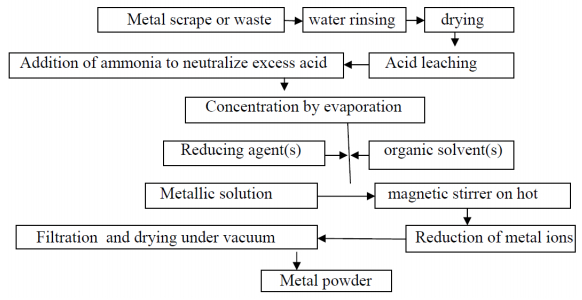 Figure 1. A sequential process flow diagram of the preparation of metal powder.
Figure 1. A sequential process flow diagram of the preparation of metal powder.The reduction products were examined for the particle size with the help of SEM type JEOL JSM-646LV Scanning Electron Microscope.
Figure 2 shows the leaching of lead metal for 3 hours in acetic acid as affected by acetic acid molality.
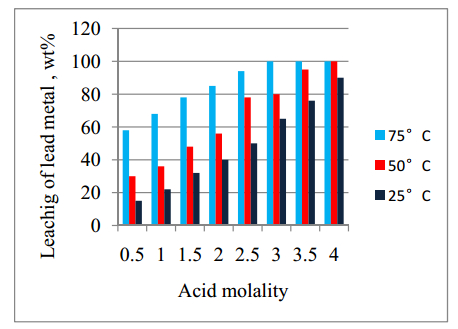 Figure 2. Leaching of lead metal for 3 hours in acetic acid as affected by acid molality.
Figure 2. Leaching of lead metal for 3 hours in acetic acid as affected by acid molality.It can be seen that at the room temperature, the extent of leaching increases with increase in acid molality. At 75 ℃, the extent of leaching attains 100% at ≥3 moles. Figure 3 shows the extent of leaching zinc cans using 3M hydrochloric acid. It is seen that low extent of leaching takes place with dilute acid or at lower temperatures. The leached weight percent of zinc increases linearly with increase in the weight ratio of the acid/weight of zinc and temperature of leaching whereby complete leaching takes place with 50% acid ratio at 75 ℃.
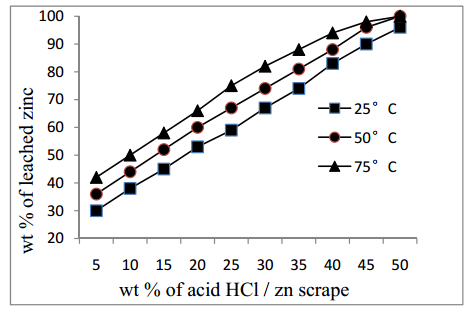 Figure 3. The extent of leaching corroded zinc cans for 2 hours using 3 mole HCl at different temperatures up to 75 ℃.
Figure 3. The extent of leaching corroded zinc cans for 2 hours using 3 mole HCl at different temperatures up to 75 ℃.Figure 4 shows the results of direct leaching of copper wire scrape after 24 hours in ammonia solution as a function of ammonia concentration at room temperature. It can be seen that ammonia leaches copper to copper tetra ammonium sulphate. The process of alkali leaching takes time (about one week) as compared to 3 mole nitric acid leaching that needs maximum 2 hours.
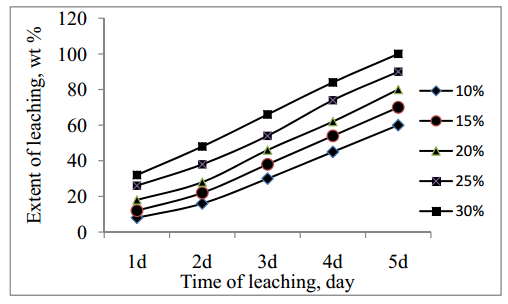 Figure 4. Extent of leaching copper wire scrape after 24 hours in ammonia solution as affected by ammonia concentration and time of leaching at room temperature.
Figure 4. Extent of leaching copper wire scrape after 24 hours in ammonia solution as affected by ammonia concentration and time of leaching at room temperature.Figure 5 shows the extent of reduction of 1 M lead acetate solution at room temperature as a function of the added hydrazine hydrate. It can be seen that the extent of reduction of lead acetate to lead metal increases linearly with increase in the volume of hydrazine hydrate. Addition of 50% by volume of hydrazine hydrate reduced only 58% of the available lead metal ions,
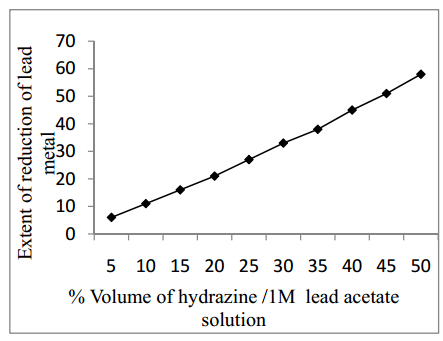 Figure 5. Effect of addition of hydrazine hydrate on the extent of reduction of lead ions at room temperature.
Figure 5. Effect of addition of hydrazine hydrate on the extent of reduction of lead ions at room temperature.Figure 6 shows the extent of reduction lead acetate at room temperature using 1 M ascorbic acid. It is seen that ascorbic acid is more efficient to reduce lead acetate as compared to hydrazine hydrate. Ascorbic acid (50% by volume of the lead acetate) reduces about 80% to lead metal powder whereas hydrazine hydrate reduces only about 60% of the same lead solution and under the same conditions.
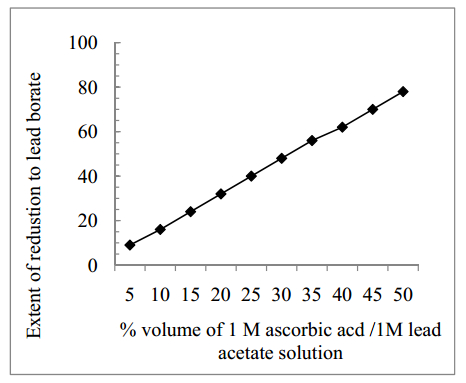 Figure 6. Extent of reduction lead acetate to lead metal at room temperature using 1 M ascorbic acid.
Figure 6. Extent of reduction lead acetate to lead metal at room temperature using 1 M ascorbic acid.The effect of using organic solvents on thee particle size of the obtained powder was studied. Four water miscible polar organic solvents were separately added in different volume ratios up to 50% to the aqueous solutions of the lead acetate, zinc sulphate and copper tetra ammonium sulphate.
Figure 7 shows the effect of solvent ratio added to copper tetra ammonium sulphate solution on the particle size of the prepared metal copper powder. It is seen that the particle diameter of the copper powder decreases with the addition of the miscible organic solvent to the aqueous solution of the metal.
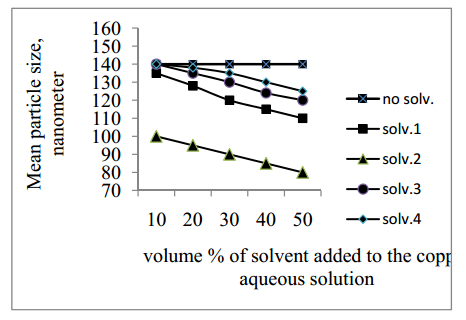 Figure 7. Effect of solvent ratio added to copper tetra ammonium sulphate solution on the particle size of the prepared metal copper powder. (1 = t-butyl alcohol, 2 = acetone, 3 = Acetonitril and 4 = Di-ethylene glycol).
Figure 7. Effect of solvent ratio added to copper tetra ammonium sulphate solution on the particle size of the prepared metal copper powder. (1 = t-butyl alcohol, 2 = acetone, 3 = Acetonitril and 4 = Di-ethylene glycol).The effect of type of the solvent on the extent of reduction of the metals is graphically presented in Figure 8. It can be seen that ascorbic acid is more active reducing agent as compared to hydrazine hydrate. The type of solvent is also remarkable. Acetone is active solvent. This is reasonable because of its structure and chemical properties as shown in Table 1 and economic basis. Acetonitril is highly expensive solvent while acetone is commercially available with low price.
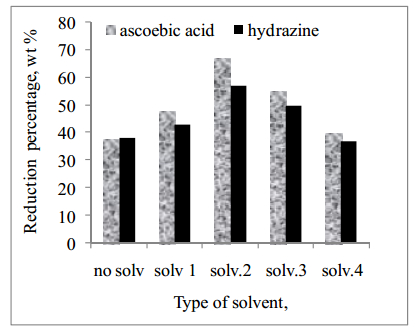 Figure 8. The effect of type of the solvent on the extent of reduction.
Figure 8. The effect of type of the solvent on the extent of reduction.The effect of addition of solvents on the particle diameter of the produced powder is given in Figure 9. It can be seen that the particle diameter decreases in the order acetone > acetonitrile > tertiary butyl alcohol > diethylene glycol-dimethyl ether whereby the values of 110 nm, 80 nm, 120 nm and 125 nm are acquired with copper powder. The values attained with zinc amounts to 95 nm, 60 nm, 100 nm and 105 nm respectively. With lead metal, the powder particle size is slightly higher, 105 nm, 90 nm, 105 nm and 120 nm.
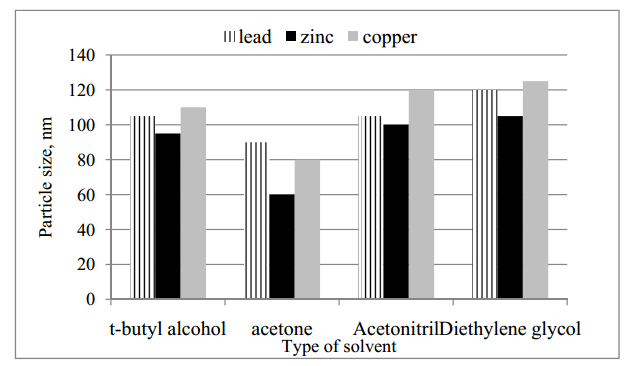 Figure 9. Effect of type of organic solvent (50%) on the particle size of the prepared metal powder.
Figure 9. Effect of type of organic solvent (50%) on the particle size of the prepared metal powder.Table 2 summarizes the results obtained with Lead, Zinc and copper particle size and shape as affected by addition of the polar organic solvents before reduction process takes place.
| No. | solvent | Properties of metal particles obtained | |||
| Size range, nm | Shape | Symmetry | notice | ||
| 0 | Only water | ≈120 | irregular | No symmetry. | |
| 1 | 50% acetone | ≈ 90 | spherical | Nearly symmetrical | Lead particles |
| 2 | 50% Acetonitril | 105 | spherical | Nearly symmetrical | Lead particles |
| 3 | 50% t-butyl alcohol | ≈ 90 | spherical | symmetrical | Zinc particles |
| 4 | 50% acetone | ≈ 60 | spherical | Symmetrical | Zinc particles |
| 5 | 50% Acetonitril | ≈ 100 | spherical | Symmetrical | Zinc particles |
| 6 | 50% Diethylene glycol | ≈ 105 | spherical | symmetrical | Zinc particles |
| 7 | 50% acetone | ≈80 | spherical | Nearly symmetrical | Copper particles |
| 8 | 50% Acetonitril | ≈120 | spherical | Nearly symmetrical | Copper particles |
The SEM study was carried out on the obtained metals powders. Images of the SEM results are shown in Figures 10 through 12.
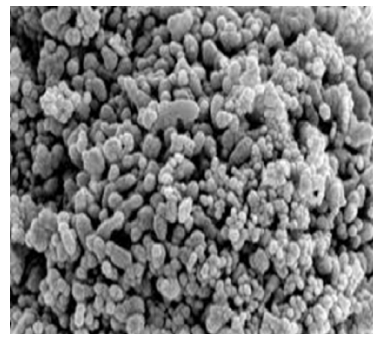 Figure 10. SEM of lead powder (50%Acetonitril).
Figure 10. SEM of lead powder (50%Acetonitril).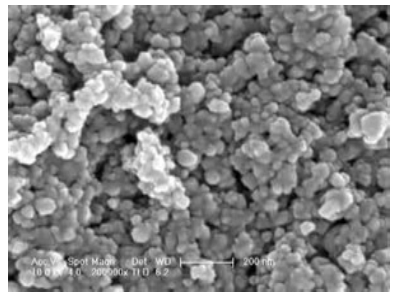 Figure 11. SEM of copper powder (containing 50% Acetonitril).
Figure 11. SEM of copper powder (containing 50% Acetonitril).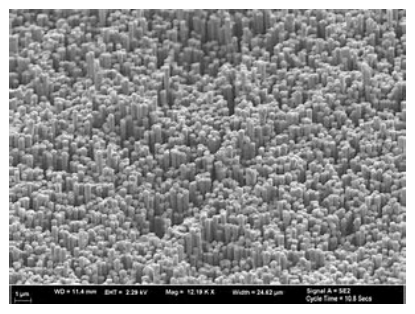 Figure 12. SEM of zinc powder (containing 50% acetone).
Figure 12. SEM of zinc powder (containing 50% acetone).Powder metallurgy is an ancient technology to manufacture metal products that are hard to prepare by casting such as coins, door keys, linings for friction brakes; metal glasses for high-strength films and ribbons; heat shields for spacecraft reentry into Earth's atmosphere; electrical contacts for handling large current flows; magnets; microwave ferrites; filters for gases; and bearings which can be infiltrated with lubricants.etc. Powder metallurgy can pose hazards to life and property. The high surface-area-to-volume ratio of the powders increases their chemical reactivity in biological exposures (for example, inhalation or ingestion), and increases the risk of dust explosions. Materials considered relatively benign in bulk can pose special toxicological risks when in a finely divided form. Application of powder metals consists of three steps: powder blending (pulverization), die compaction, and sintering. Compaction is generally performed at room temperature, and the elevated-temperature process of sintering is experienced at atmospheric pressure and controlled conditions.
The classical methods of preparation of metal powder are molten spray, atomization, grinding and sieving, crushing etc. In this study we used a chemical method to prepare metal powder having similar particle size and shape. The steps used are given in Fig. 1.With hydrazine as a reducing agent, the annual production is nearly 120,000 tons (corresponding to a 64% solution of hydrazine in water by weight). These were manufactured worldwide per year [19]. The mechanism of reduction process of hydrazine would take place in sequences from 1 to 3 as follows [20]:
| 3N2H4→4NH3+N2 | (1) |
| N2H4→N2+H2 | (2) |
| 4NH3+N2H4→3N2+8H2 | (3) |
It is that the generated hydrogen is the reducing agent that performs the reduction process. Ascorbic acid on the other hand (vitamin C), is a potent reducing and antioxidant agent. It has the chemical formula C6H8O6. The chemical structures of both materials are as represented in Figure (13), [21].
 Figure 13. The chemical structures of hydrazine ascorbic acid.
Figure 13. The chemical structures of hydrazine ascorbic acid.It is the hydrogen ion attached to the pentagonal structure that reduces the metals salts to the respective element. Such hydrogen ion already present in ascorbic acid makes it to be more effective than hydrazine hydrtte
| Pb+22(CH3COO)−1+3H+→Pb+2CH3COOH | (4) |
| Zn+2(SO4)−2+2H+→Zn+H2SO4 | (5) |
| Cu+2(NH3)4(H2O)n]SO4−2→Cu+(NH4)2SO4+H2O | (6) |
Wu and Meng [22] prepared ultrafine silver powder using ascorbic acid as reducing agent and its application in multi layer ceramic industry (MLCI).The average congeries sizes (D50) reduces linearly from 3.1 to 1.0 μm as the reaction temperature increases from 20 to 60 ℃. The zinc powder has excellent dispensability and small size. Another potential advantage of using vitamin C is that such reducing agent is only composed of carbon, oxygen and hydrogen, thus minimizing the risk of introducing hetero atoms in the reduced products that were not present before. Fernandez-Merinoet et al. showed that Vitamin C is an Ideal Substitute for Hydrazine in the reduction of graphene oxide suspensions [23]. Zinc powder has less symmetry as compared to the other metals. The reason is anticipated to small atomic volume of zinc that makes accumulation of the metal particles subject to variation and forms particles with different shape. It is clear to claim that the shape of the particles of metals is related to the atomic volume of the metal of concern and the rate of which reduction process of their salts takes plac.
We used water as a polar solvent to facilitate dissolution of the metals salts and the reducing agents in the same time. In this context, 4 water miscible organic solvents having different polarity were chosen to detect the effect of solvent polarity on the obtain particle diameter of the powder so obtained. As far as these reactions are concerned, the effectiveness of the reducing agents (hydrazine hydrate and ascorbic acid) is highly determined by the forces required to release hydrogen in the solution in our case, ion-dipole forces consists of an ion and a polar molecule display interacting. This criterion explains the difference between the used solvents on the extent of reduction of the metals ions. Reducibility increases with the increase in polarity of the solvent. Such results are in agreement with the basis of the transition state theory and according to the Hughes and Ingold's rule, polar solvents align so that the positive and negative groups are next to one another, allowing maximum attraction. OurResults highlighted that chemical reduction of the ionic species takes place in sequence steps. The first step would be suggested as diffusion criteria of the reactant as assumed in Figure (14). It demonstrates the steps that may take place. Attraction of the positively charged metal ions to the multi branched reducing agent that has its ionic hydrogen and to accomplish the reduction process
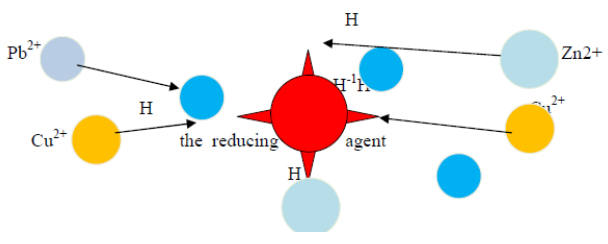 Figure 14. A graphical representation of the model of diffusion.
Figure 14. A graphical representation of the model of diffusion.Diffusion of species of concern across a boundary layer is established at the polar site of the organic solvent molecules. The second step is the direct contact of the reactants. The third step involves the reduction process. The forth is the backward diffusion of the products apart from the reaction boundary layer. The last is the diffusion of metal particles across the bulk of solution to the bottom of the container. Efficiency of reduction is related to the Results showed that addition of water-miscible solvents having high dielectric constant bring about higher extent of reduction. The polarity extent would energize and enhance the first step of the model to be more rapid and to yield particles with larger size and symmetrical shape.
The output conclusion of this study is that Hydrazine hydrate and ascorbic acid are convenient reducing agents to prepare meal powder from their salt solutions. Polar organic solvents improve the size and morphology of the formed particles. The reduction reaction takes place in asquential reactions that involves diffusion of metal ions from the solution bulk towards the negatively charged molecule of the reducing agent, Ascoebic acid is found more powerful as compared to hydrazine hydrate because it carries ionic hydrogen in its structure while hydrazine hydrate should dissociates before releasing hydrogen ions in the solution. The efficiency and performance of the water soluble organic solvent are highly related to the polarity and dielectric constant values. The efficiency of reduction would depend on the volume of the added solvent to the aqueous solution of metals. The effect of the experimental conditions such as time, temperature and concentration of reactants should also be regarded. Table 2 summarizes the results obtained with respect to the particle size and morphology.
The author declares no conflicts of interest in this paper
| [1] | Thornton CP (2007) Of brass and bronze in prehistoric Southwest Asia. Papers and Lectures Online. Archetype Publications. |
| [2] | SahuandK K, Agrawal A (2017) Recycling of metals from secondary sources treatment options. Wikipedia, online 2017. |
| [3] | Solisio C, Marco P, Piergiorgio P, et al. (1999) Electrochemical remediationofcopper(II) from an industrial effluent. Part I: Monopolar plate electrodes. Resour Conserv Recy 26: 115–124. |
| [4] |
Ahmed IM, Nayl AA, Daoud JA (2016) Leaching and recovery of zinc and copper from brass slag by sulfuric acid. J Saudi Chem Soc 20: S280–S285. doi: 10.1016/j.jscs.2012.11.003

|
| [5] |
Foda S, Rabah M (1999) Hydrometallurgical recovery of metal values from brass melting slag. Hydrometallurgy 53: 31–44. doi: 10.1016/S0304-386X(99)00030-4

|
| [6] |
Jha, MK, Kumar V, Singh RJ (2001) Review of hydrometallurgical recovery of zinc from industrial wastes. Resour Conserv Recy 33: 1–22. doi: 10.1016/S0921-3449(00)00095-1

|
| [7] |
Rabah MA, El-Sayed AS (1995) Recovery of zinc and some of its valuable salts from secondary resources and wastes. Hydrometallurgy 37: 23–32. doi: 10.1016/0304-386X(94)00015-U

|
| [8] |
Turan MD, Altundoğan, HS, Tümen F (2004) Recovery of zinc and lead from zinc plant residue. Hydrometallurgy 75: 169–176. doi: 10.1016/j.hydromet.2004.07.008

|
| [9] | Hodjaoglu GA, Ivanov IS (2014) Metal recovery of solid metallurgical wastes. Galvanostatic electroextraction of copper from sulphate electrolytes containing Zn2+ and Fe2+ ions. Bulgarian Chem Commun 46: 150–156. |
| [10] | Meija J, Coplen TB, Berglund M, et al. (2016) Atomic weights of the elements 2013 (IUPAC Technical Report). Pure Appl Chem 88 : 265– 2 91. |
| [11] | Suganty K, Norita M (2003) Recovery of copper using an electro MP–Cell operated in anelectrogenerative mode. Sep Purif Technol 118: 279–284. |
| [12] | Weast R (1984) CRC, Handbook of Chemistry and Physics. Boca Raton, Florida: Chem Rubber Company Publishing. pp. E110. |
| [13] | Environmental Quality Act 1974 (Act 127), Regulations, Rules &Orders, International Law Book Services, Kuala Lumpur, 2009. |
| [14] | Skipton S, Hay D (1998) Drinking Water: Copper. Available from: http://www.ianr.unl.edu/pubs/Water/g1360.htm. |
| [15] |
Chang FC, Lo SL, Ko CH (2007) Recovery of copper and chelating agents fromsludge extracting solutions. Sep Purif Technol 53: 49–56. doi: 10.1016/j.seppur.2006.06.011

|
| [16] |
Cay S, Uyanık A, Ozasik A (2004) Single and binary component adsorption ofcopper(II) and cadmium(II) from aqueous solutions using tea-industry waste. Sep Purif Technol 38: 273–280. doi: 10.1016/j.seppur.2003.12.003

|
| [17] |
Basha CA, Bhadrinarayana NS, Anantharaman N, et al. (2008) Heavymetal removal from copper smelting effluent using electrochemical cylindricalflow reactor. J Hazard Mater 152: 71–78. doi: 10.1016/j.jhazmat.2007.06.069

|
| [18] |
Chen JP, Lim LL (2002) Key factors in chemical reduction by hydrazine for recoveryof precious metals. Chemosphere 49: 363–370. doi: 10.1016/S0045-6535(02)00305-3

|
| [19] | Jean-Pierre S, Paul B (2002) "Hydrazine" in Ullmann's Encyclopedia of Industrial Chemistry, Wiley-VCH, Weinheim, 2002. |
| [20] | Haws JL , Harden DG (1965) Thermodynamic Properties of Hydrazine . J Spacecraft Rockets 2 (6): 972–974 . |
| [21] | Eiblmaier J, Saller H, Heidelberg DG (2017) Outline PubChem, open chemistry database, online 4/45. |
| [22] |
Wu S, Meng S (2005) Preparation of ultrafine silver powder using ascorbic acid as reducing agent and its application in MLCI. Mater Chem Phys 89: 423–427. doi: 10.1016/j.matchemphys.2004.09.026

|
| [23] | .Fernandez-Merino MJ, Guardia L, Paredes JI, et al. (2010) Vitamin C Is an Ideal Substitute for Hydrazine in theReduction of Graphene Oxide Suspensions. J Phys Chem C 114: 6426–6432. |
| 1. | Si Jeong Song, Viet Nhan Hoa Nguyen, Man Seung Lee, Recovery of Palladium Metal with High Purity by Selective Reduction from Inorganic Acid Leaching Solutions of Cemented Zinc, 2022, 60, 1738-8228, 837, 10.3365/KJMM.2022.60.11.837 |
| No. | Solvent | Purity | Formula | M Wt | Density(g/ml) | Dielectric constant |
| 1 | t-butyl alcohol | 99.94 | C4H10O | 74.12 | 0.7887 | 12.5 |
| 2 | Acetone | 99.6 | C3H6O | 58.079 | 0.7845 | 21.01 |
| 3 | Acetonitril | 99.2 | C2H3N | 41.052 | 0.7857 | 36.64 |
| 4 | Di-ethylene glycol | 97.8 | C6H14O3 | 134.17 | 0.943 | 7.23 |
| No. | solvent | Properties of metal particles obtained | |||
| Size range, nm | Shape | Symmetry | notice | ||
| 0 | Only water | ≈120 | irregular | No symmetry. | |
| 1 | 50% acetone | ≈ 90 | spherical | Nearly symmetrical | Lead particles |
| 2 | 50% Acetonitril | 105 | spherical | Nearly symmetrical | Lead particles |
| 3 | 50% t-butyl alcohol | ≈ 90 | spherical | symmetrical | Zinc particles |
| 4 | 50% acetone | ≈ 60 | spherical | Symmetrical | Zinc particles |
| 5 | 50% Acetonitril | ≈ 100 | spherical | Symmetrical | Zinc particles |
| 6 | 50% Diethylene glycol | ≈ 105 | spherical | symmetrical | Zinc particles |
| 7 | 50% acetone | ≈80 | spherical | Nearly symmetrical | Copper particles |
| 8 | 50% Acetonitril | ≈120 | spherical | Nearly symmetrical | Copper particles |
| No. | Solvent | Purity | Formula | M Wt | Density(g/ml) | Dielectric constant |
| 1 | t-butyl alcohol | 99.94 | C4H10O | 74.12 | 0.7887 | 12.5 |
| 2 | Acetone | 99.6 | C3H6O | 58.079 | 0.7845 | 21.01 |
| 3 | Acetonitril | 99.2 | C2H3N | 41.052 | 0.7857 | 36.64 |
| 4 | Di-ethylene glycol | 97.8 | C6H14O3 | 134.17 | 0.943 | 7.23 |
| No. | solvent | Properties of metal particles obtained | |||
| Size range, nm | Shape | Symmetry | notice | ||
| 0 | Only water | ≈120 | irregular | No symmetry. | |
| 1 | 50% acetone | ≈ 90 | spherical | Nearly symmetrical | Lead particles |
| 2 | 50% Acetonitril | 105 | spherical | Nearly symmetrical | Lead particles |
| 3 | 50% t-butyl alcohol | ≈ 90 | spherical | symmetrical | Zinc particles |
| 4 | 50% acetone | ≈ 60 | spherical | Symmetrical | Zinc particles |
| 5 | 50% Acetonitril | ≈ 100 | spherical | Symmetrical | Zinc particles |
| 6 | 50% Diethylene glycol | ≈ 105 | spherical | symmetrical | Zinc particles |
| 7 | 50% acetone | ≈80 | spherical | Nearly symmetrical | Copper particles |
| 8 | 50% Acetonitril | ≈120 | spherical | Nearly symmetrical | Copper particles |